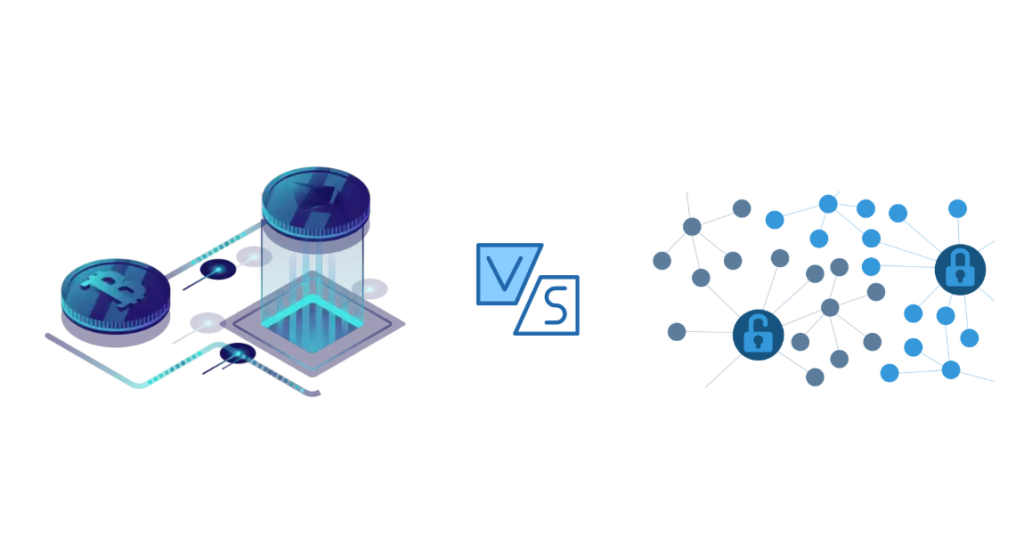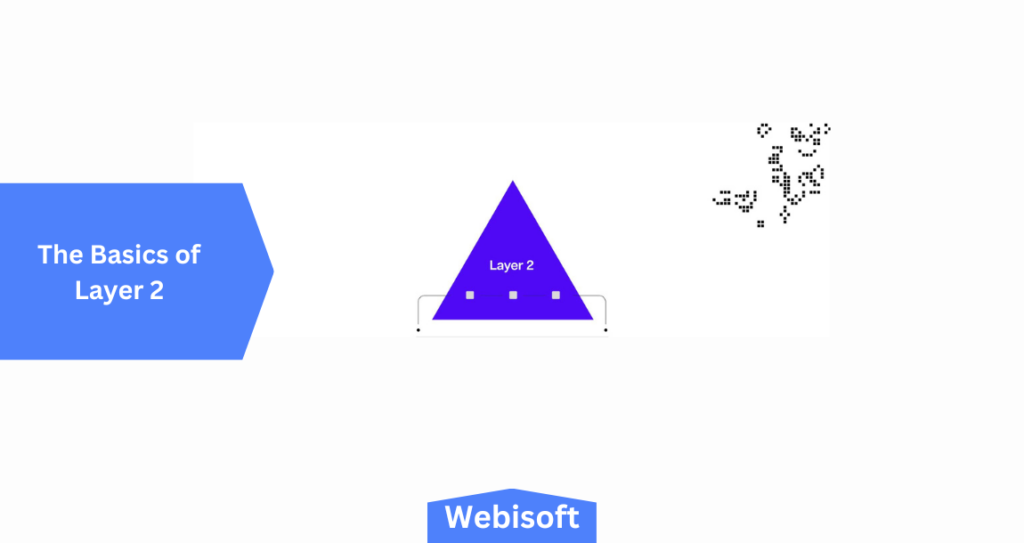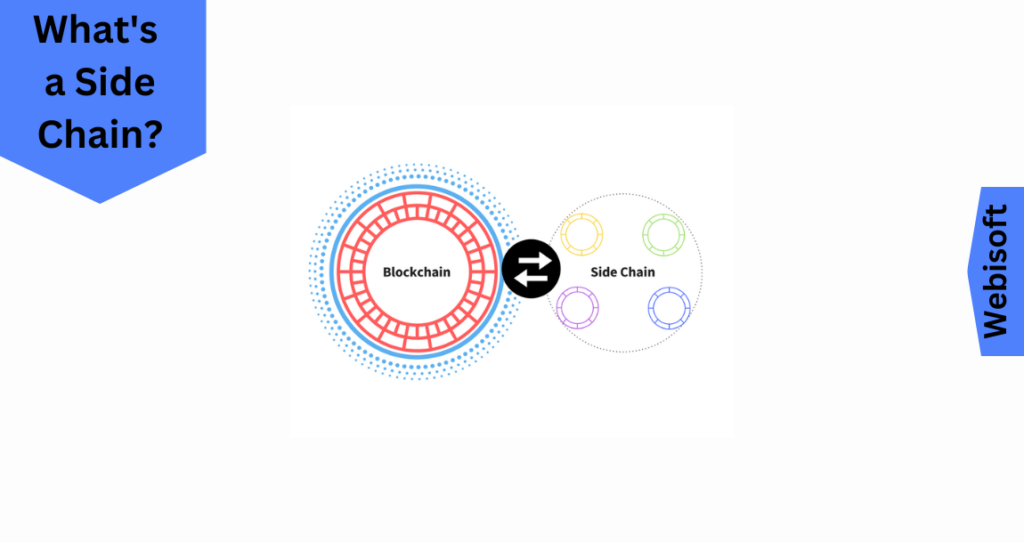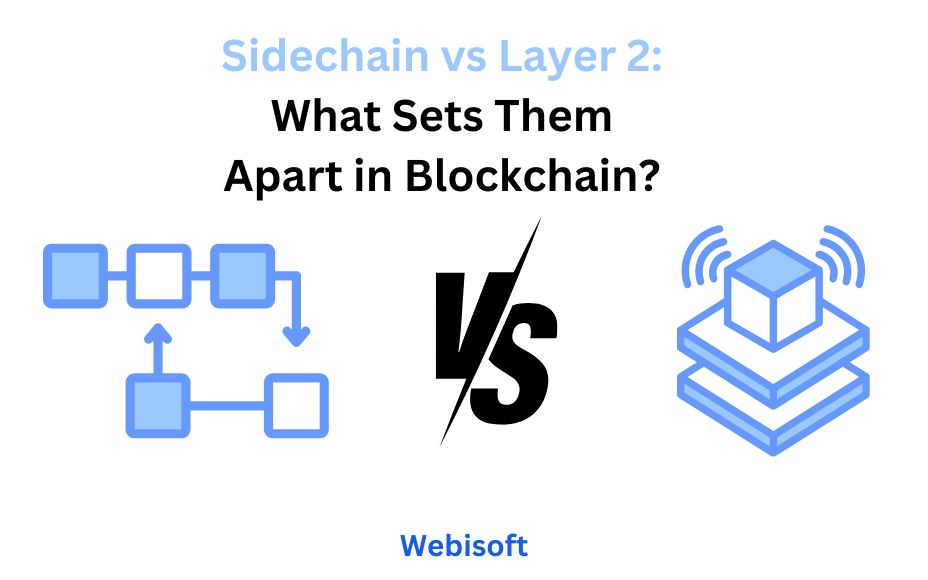Remember when Bitcoin made waves as the first kid on the blockchain block? Well, that was just the beginning.
Soon after, big names like Ethereum, Solana, and Tezos jumped in, each bringing their own cool features that could change how entire industries work.
But hey, no tech is perfect, right? Blockchain has its own set of issues. Thankfully, the tech community isn’t one to sit still. They’ve come up with fixes like sidechain vs layer 2 blockchains to make things perfect.
Let’s get into the nitty-gritty. This piece will take you into layer 2 blockchains, side chains, and app chains. By the end, you’ll have a solid grasp of how these pieces fit into the bigger blockchain puzzle.
Contents
- 1 Understanding Blockchain: Public vs. Private Chains
- 2 Public vs. Private Chains: What Sets Them Apart?
- 3 The Basics of Layer 2
- 4 How Do Layer 2 Chains Support the Main Net?
- 5 The Perks of Using Layer 2 Blockchains
- 6 Layer 2 Blockchain Examples
- 7 What’s a Side Chain?
- 8 How Does a Side Chain Work?
- 9 Why Consider Using a Side Chain?
- 10 What is an App Chain?
- 11 The Advantages of Using App Chains
- 12 A Quick Guide to Blockchain Types
- 13 Conclusion
- 14 FAQs
Understanding Blockchain: Public vs. Private Chains
When we talk about blockchain, there are two main flavors: public and private. Let’s see what each of these means.

1. Public Chains
Public blockchains are the big names you’ve probably heard about. Think Ethereum, Tezos, and Solana. These chains are open to everyone.
That means anyone can hop in, build cool stuff, or just take a look around. It’s like a big open playground where everyone’s invited.
And the best part?
Once something’s added to this playground, it stays there. Safe and sound. These open chains are often called layer 1 or L1 blockchains. They’re like the main stage where all the action happens.
And yes, if you’re curious, you can check out any activity that’s taken place on them.
2. Private Chains
Now, private chains are a bit more exclusive. Imagine a VIP lounge where you need a special pass to get in. That’s how private chains work.
They’re managed by specific folks, and you need their okay to join the party. These chains are the go-to choice for businesses that want to keep things in-house. Names like Hyperledger Fabric and Corda might ring a bell here.
Public vs. Private Chains: What Sets Them Apart?
When getting into the world of blockchain, you’ll often hear about public and private chains. But what really makes them different?
Let’s break it down,
Public Blockchains
- Decentralization: These are the real deal. Fully decentralized.
- Speed: They tend to take their time, so they’re a bit on the slower side.
- Who’s in Charge?: It’s a community affair. No single entity has the reins.
- Getting In: No invites needed. Anyone can join the party.
- Who Can See?: It’s an open book. Anyone can take a peek.
- Safety First: They’re built like fortresses. Super secure.
- What’s it For?: They’re like Swiss Army knives. Good for a lot of things.
Private Blockchains
- Decentralization: They have a touch of decentralization, but not fully.
- Speed: These are the speedy Gonzales of blockchains. Quick and efficient.
- Who’s in Charge?: A select group of nodes calls the shots.
- Getting In: It’s a members-only club. You need permission.
- Who Can See?: It’s more of a closed diary. Only a few can access it.
- Safety First: They’re secure, but not as much as their public counterparts.
- What’s it For?: They’re tailor-made. Designed for specific tasks.
The Basics of Layer 2

Think of a layer 2 blockchain as a helper. It can’t stand on its own and always needs a layer 1 blockchain to lean on. It’s like an add-on or an extension that connects to the main blockchain, drawing from its security.
Basically, Layer 2 blockchains are like the special tools in a toolkit. They’re designed to do specific jobs that the main blockchain might struggle with.
A common job here is to make the main blockchain work faster and handle more stuff.
How Do Layer 2 Chains Support the Main Net?
Imagine a busy highway with cars (transactions) trying to get to their destinations. Now, think of the main blockchain networks, like Ethereum, as that highway.
They’re great at handling traffic, but when too many cars pile up, things can get slow and jammed.
But, Layer 2 chains act like special express lanes designed to ease traffic. Instead of every car using the main highway, some can use these express lanes to move faster.
Now you may ask how?
Well, by taking transactions off the main road and processing them separately. Once they’re done, they neatly wrap up the results. And also they bring them back to the main highway.
The Perks of Using Layer 2 Blockchains
Ever wondered why there’s so much buzz around layer 2 blockchains? Let’s dive into the reasons.
Boosting Scalability
Layer 2 blockchains are like a helping hand for the main blockchain. They take on some of the heavy lifting. Also, allows the main chain to handle more transactions smoothly.
It’s like adding more checkout lanes in a supermarket during rush hour.
Saving on Costs
With more transactions being processed efficiently, the demand on the main blockchain eases up. The result is you get to enjoy lower transaction fees. It’s all about getting more bang for your buck.
Speeding Things Up
Nobody likes waiting, right? Layer 2 blockchains can speed up the time it takes for transactions to get verified and recorded. It’s like using the express lane in a toll booth.
Playing Well with Others
One of the cool things about layer 2 solutions is that they’re built on top of existing blockchains. This means they can easily fit into current systems without the need for major overhauls.
Adding Some Extra Features
Layer 2 blockchains aren’t just about speed and efficiency. They can also introduce new features to the main blockchain. For example, enabling specific privacy settings or even allowing for things like atomic swaps.
Layer 2 Blockchain Examples
Ever heard of layer 2 blockchains and wondered what they’re all about? Let’s explore some of the standout examples.
ZK-Rollups
ZK-Rollups are all about giving the Ethereum network a boost. They handle transactions away from the main stage. Then they group them together to finalize the Ethereum main network.
The main goal here is to keep things moving smoothly without traffic jams.
Lightning Network
For all the Bitcoin enthusiasts out there, the Lightning Network is a game-changer. It lets users make transactions off the main Bitcoin blockchain, making things swift and efficient.
X-Dai
If you’re looking for a way to make transactions on the Ethereum network both quicker and more layer 2 wallet-friendly, X-Dai is the answer. It’s designed to speed things up without breaking the bank.
Immutable
For those diving into the world of NFTs on Ethereum, Immutable is a platform to watch. It lets users create, purchase, and trade NFTs.
The best part? No gas fees, quick trade confirmations, and you still have full control.
What’s a Side Chain?

Think of a side chain as a sibling to the main blockchain. It’s a separate blockchain that can chat with the main one, allowing for the transfer of digital goodies between them.
Now, you might be thinking, “Isn’t that just like a layer 2 blockchain?” Well, not quite. Let’s break down the differences.
Side Chain vs. Layer 2
A side chain is like a mini version of the main network. It’s designed with fewer features but can stand on its own two feet.
Unlike a layer 2 blockchain, which always needs the main blockchain to function, a side chain is independent. It has its own rules and can be tailored for specific tasks.
And just like the main blockchain, a side chain is open for everyone to see and join.
How Does a Side Chain Work?
At its heart, a side chain operates much like the main network. It has its own set of rules, and folks can join to help keep it secure.
But the way it reaches decisions, or its consensus protocol, might be different from the main chain.
The magic happens when a side chain connects to the main blockchain. This connection is called a two-way peg. It lets users move assets between the two chains.
When you move assets from the main chain to the side chain, they get locked up on the main chain and the same amount pops up on the side chain.
And when do you want to move them back? The process simply reverses.
Why Consider Using a Side Chain?
When diving into the world of blockchain, you might wonder why someone would opt for a side chain. Let’s explore the reasons.
Tailored to Your Needs
One of the standout features of side chains is customization. Since they’re built separately from the main network, they come with their own rulebook.
This means they can be shaped and molded for specific tasks or projects.
A Boost in Security
Think of side chains as a secure vault for your most precious transactions. By allowing high-stakes or sensitive activities to take place off the main network, side chains can offer an extra layer of protection.
It’s like having a safety net for your most crucial moves.
A Playground for Innovation
Side chains are like sandbox environments. Developers can try out fresh features or tech without causing ripples on the main network. It’s a space where creativity meets experimentation, all without any mixups for the main blockchain.
A Shoutout to Polygon
Speaking of side chains, have you heard of Polygon? It’s a shining example of a side-chain solution. Plus, it’s designed to give a boost to public networks with a special focus on Ethereum.
What is an App Chain?
An App Chain is a specialized digital structure designed with a specific purpose in mind. Unlike general platforms that cater to a broad audience, an App Chain is tailored for a select group. It ensures exclusivity and a more focused user experience.
However, its uniqueness doesn’t stop there. While it may resemble a VIP lounge that offers privileged access to its members, it comes with an added layer of security and functionality.
This is achieved through a concealed gateway that seamlessly links it to other chains or platforms. This interconnectivity not only enhances its security measures but also expands its feature set.
Therefore, it provides users with a comprehensive and integrated experience.
The Advantages of Using App Chains
Utilizing an app chain offers you unparalleled control and flexibility. Here’s what you stand to gain:
Dynamic Scalability
With an app chain, you have the ability to scale your operations up or down based on your requirements. This means you can efficiently handle increased loads or demands without any hitches.
Eliminate Gas Fee Worries
One of the significant benefits of app chains is the elimination of gas fees. This means you can conduct transactions or execute operations without the constant concern of incurring high costs.
Enhanced Privacy for Smart Contracts
App chains allow you to maintain a higher degree of confidentiality for your smart contracts. Instead of making them publicly accessible, you can keep them discreet.
It’ll ensure that your business logic remains private and secure.
Optimized Performance through Proximity
You can ensure faster data retrieval and processing by placing your application and its associated data closely together within the app chain.
This proximity leads to top-tier performance, enhancing the user experience and ensuring smooth operations.
A Quick Guide to Blockchain Types
Navigating the world of blockchains can be a bit like deciphering a menu in a foreign language. Let’s break down the three types we’ve discussed: layer 2 chains, side chains, and app chains.
Layer 2 Blockchain:
- What’s it all about? It’s designed to give the main blockchain a boost by managing transactions off the main stage.
- Security: Its safety net comes from the main blockchain.
- Can it handle lots of action? Absolutely, it’s built for it.
- Open to everyone? It can vary.
- Public records? Everything’s out in the open for everyone to see.
- Any fees? Sometimes, especially when there’s a bunch of transactions to bundle together.
- Chats with the main blockchain? Always.
Side Chain:
- What’s it all about? It’s a bit like a layer 2 chain, but it stands on its own and zeroes in on a specific task.
- Security: It’s got its own built-in safety measures.
- Can it handle lots of action? Yep, it’s up for the challenge.
- Open to everyone? Always welcoming.
- Public records? Totally transparent.
- Any fees? Nope, it’s fee-free.
- Chats with the main blockchain? Of course.
Conclusion
All these structures, whether it’s side chain vs layer 2, are about making the most of what blockchains offer.
And we believe a comprehensive guide to different blockchain types will let you know their importance. They’re not just about overcoming the hurdles of speed or scalability.
Surely, they’re about pushing the boundaries and shaping the future of the blockchain world.
With Webisoft by your side, unlocking the blockchain’s potential becomes a breeze. Dive deeper with experts who care. Reach out to Webisoft now!
FAQs
Are Layer 2 Chains more secure than Side Chains?
Layer 2 Chains derive their security from the main chain, while Side Chains have their own security protocols. The security level can vary based on the specific implementation and design.
Which type of chain should I use for my project?
It depends on your project’s needs. If you need faster transactions, Layer 2 might be suitable. For a specific use case, an App Chain or Side Chain might be more appropriate.
Can assets be transferred between a main chain and a Side Chain?
Yes, assets can typically be locked up on the main chain and equivalent assets issued on the Side Chain, and vice versa.
